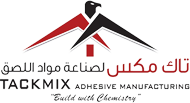Introduction: Welcome to the ultimate guide to epoxy adhesives! Epoxy adhesives are renowned for their versatility, strength, and durability, making them indispensable in various industries and applications. In this comprehensive blog post, we’ll delve into the fascinating world of epoxy adhesives, exploring their diverse applications, unparalleled benefits, and best practices for achieving optimal results. Whether you’re a seasoned professional or a DIY enthusiast, this guide will equip you with the knowledge and insights needed to harness the full potential of epoxy adhesives.
Understanding Epoxy Adhesives: Epoxy adhesives are a type of structural adhesive renowned for their exceptional bonding properties and wide-ranging applications. Composed of epoxy resin and a hardening agent, epoxy adhesives undergo a chemical reaction upon mixing, forming a strong and durable bond capable of withstanding various environmental conditions and mechanical stresses. Unlike traditional adhesives, epoxy adhesives offer high strength, chemical resistance, and versatility, making them ideal for bonding a diverse range of materials, including metals, plastics, composites, ceramics, and more.
Applications of Epoxy Adhesives: The versatility of epoxy adhesives lends them to a myriad of applications across numerous industries. From construction and manufacturing to automotive and aerospace, epoxy adhesives play a vital role in bonding, sealing, and repairing a wide range of components and structures. Some common applications of epoxy adhesives include:
- Structural Bonding: Epoxy adhesives are used extensively in structural bonding applications, where high strength and durability are paramount. They are ideal for bonding metal components, composite materials, and concrete elements in construction and engineering projects.
- Composite Fabrication: Epoxy adhesives are indispensable in the fabrication of composite materials, such as fiberglass, carbon fiber, and Kevlar. They provide strong and reliable bonds between composite layers, enabling the creation of lightweight and high-performance structures.
- Electronics Encapsulation: In the electronics industry, epoxy adhesives are utilized for encapsulating and potting electronic components, providing protection against moisture, chemicals, and mechanical shock. They ensure the integrity and reliability of electronic devices in demanding environments.
- Automotive Repairs: Epoxy adhesives are commonly used in automotive repairs for bonding body panels, plastic components, and composite parts. They offer excellent adhesion to various substrates and provide durable repairs for vehicles subjected to harsh conditions.
Benefits of Epoxy Adhesives: The use of epoxy adhesives offers a multitude of benefits, making them the adhesive of choice for numerous applications:
- High Strength: Epoxy adhesives exhibit exceptional bonding strength, surpassing that of traditional adhesives. They form robust bonds capable of withstanding high loads and mechanical stresses, ensuring the integrity and longevity of bonded assemblies.
- Chemical Resistance: Epoxy adhesives are highly resistant to a wide range of chemicals, including solvents, fuels, acids, and alkalis. This chemical resistance makes them suitable for applications where exposure to harsh environments is expected, such as industrial settings and chemical processing facilities.
- Versatility: Epoxy adhesives can bond a diverse range of materials, including metals, plastics, ceramics, and composites. Their versatility allows for seamless bonding of dissimilar materials, enabling the fabrication of complex assemblies and structures.
- Durability: Epoxy adhesives offer excellent durability and long-term performance, even in challenging conditions. They resist degradation from UV exposure, moisture, and temperature fluctuations, ensuring the reliability of bonded joints over time.
Best Practices for Using Epoxy Adhesives: To achieve optimal results when using epoxy adhesives, it’s essential to follow best practices and proper application techniques:
- Surface Preparation: Ensure that the surfaces to be bonded are clean, dry, and free of contaminants, such as oil, grease, and dust. Proper surface preparation is crucial for achieving maximum adhesion and bond strength.
- Mixing Ratio: Follow the manufacturer’s instructions regarding the mixing ratio of epoxy resin and hardener. Proper mixing is essential to initiate the curing process and achieve a strong bond. Use calibrated mixing tools and containers to ensure accuracy.
- Application Technique: Apply the epoxy adhesive evenly to the bonding surfaces using a brush, roller, or applicator. Ensure thorough coverage and avoid excessive application to prevent excess adhesive from seeping out during bonding.
- Clamping and Curing: Secure the bonded components in place using clamps, fixtures, or pressure to ensure intimate contact between the mating surfaces. Allow sufficient curing time as per the manufacturer’s recommendations, taking into account factors such as temperature and humidity.
Conclusion: Epoxy adhesives are a versatile and indispensable solution for a wide range of bonding applications, offering unparalleled strength, durability, and versatility. By understanding their applications, benefits, and best practices, you can harness the full potential of epoxy adhesives in your projects, whether in construction, manufacturing, automotive, or electronics. Remember to choose high-quality epoxy adhesives from trusted manufacturers like Tackmix and follow proper application techniques to achieve reliable and long-lasting bonds. With the right knowledge and expertise, you can unlock endless possibilities with epoxy adhesives and elevate the quality and performance of your bonded assemblies.
